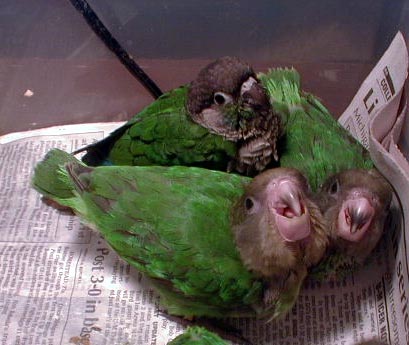|
| Query: bird | Result: 8950th of 32675 | |
My Birds - babies
| Subject: | My Birds - babies
| | Poster: | Lara (quaker@email.com)
| |

| File size : 31243 bytes
File date : 2000:12:25 18:35:09
Resolution: 409x345
Jpeg process : Baseline
Posted Newsgroups: alt.binaries.pictures.animals
Posted Date: Fri, 19 Mar 1999 02:59:56 -0400 |
My Birds - babies
One baby green cheek conure, about 7 weeks old,
and two baby African brown headed parrots
(Poicephalus crytoxanthus), about 6 weeks old.
Lara
"bh1n2gc3d315.jpg" |
^o^
Animal Pictures Archive for smart phones
^o^
|
|

